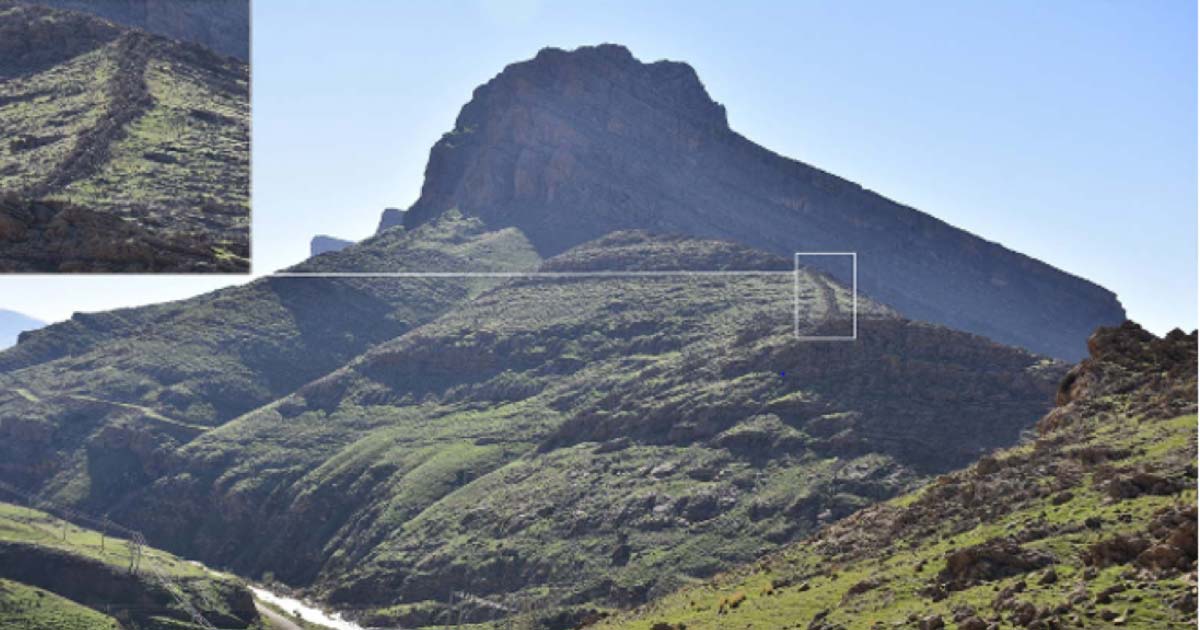Great 2,200-year-old Barrier Wall Found in Iran
A survey in Western Iran has revealed a lengthy and substantial barrier wall meandering through a remote area, that dates back over 2200 years. The builders of this wall and its original purpose is something of an enigma.
The wall was found during a survey working in Sar Pol-e Zahab County in Kermanshah Province. This area is located on ‘the Great Khorasan route, or the ‘Zagros Gate’ and ‘Asia Gate’ according to a study published by Antiquity. It is a region that is famous for rock reliefs, archaeological remains, and ancient inscriptions, dating back to pre-Islamic times. The researchers discovered a number of remains dating from the Stone Age to the Abbasid Caliphate, during the work.
Mysterious Wall
The survey found the remains of a wall that stretched for 71 miles (115 kilometers), during its work. It runs from the Bamu Mountains to near a small village, near Guwaver of Gilan-e-Gharb, and much of it is built on hills and rocky outcrops. The mysterious wall was ‘the length of the famous Hadrian's Wall that was built across England by the Romans’ reports Live Science.
The stone wall is in a poor state of repair and this means that it is hard to estimate its height and width. Live Science reports Sajjad Alibaigi, a Ph.D. student at the University of Teheran and author of the study, stating that the survey team who found the barrier estimate that it is ‘13 feet (4 meters) wide and about 10 feet (3 m) high’. The route of the wall was determined by the topography of the area.

‘Gawri Wall’ in the western mountains of Sar Pol-e Zahab. (F.Fatahi/© Antiquity Publications Ltd, 2019)
Huge barrier
This massive barrier is made out of local materials, including rocks and boulders, held together by a gypsum mortar. Live Science reports that Alibagi has stated that ‘Remnants of structures, now destroyed, are visible in places along the wall’. These may have been turrets, gatehouses, or towers. The construction of the barrier was a massive undertaking and required many resources. Live Science reports that ‘approximately one million cubic meters [35,314,667 cubic feet] of stone’ was used in the construction of the wall.
While the team who found the wall were amazed by their discovery, it was not news to the local people. They have long known about the wall and they refer to it as the ‘Gawri Wall’ reports the Medical Daily. Moreover, it was also identified by a team of archaeologists in the past, but they never published their findings.
- The Great Wall of Gorgan: Red Snake of Iran Saw Empires Rise and Civilizations Crumble
- The Great Wall of China Construction Project that Spanned Generations, Centuries and Dynasties
- New Study Indicates that Europe Owes Ancestry and Agriculture to Early Anatolian Farmers

Satellite image of the Gawri Wall and castle, and structures along the Wall (© Google Earth 2019).
Persian Empires
Because of the scale of the resources and organization needed to build the wall, it seems likely that the barrier was built on the orders of a powerful monarch. This would probably mean that it dates ‘to the Partho-Sasanian period’ reports Antiquity. The Parthians (247 BC-224 AD) and the Sasanians (224-641 AD) ruled powerful Empires based on the Iranian Plateau and were the implacable enemies of Rome. “The discovery of Partho-Sasanian potsherds at several locations along the wall could suggest that it was first built during the Partho-Sasanian period and was subsequently restored”, states the study. However, this has not been definitively established.
It appears likely that a Persian monarch ordered local notables to build and to maintain the wall. There are a number of important monumental remains in the general area, including a castle and an irrigation system. The wall was also near the strategic ancient city of Hulwan. In the Parthian and Sasanian Empire, the area was of great economic importance.
A wall against nomads?
There are a number of other ancient walls in Iran and they are mainly located in the north and east. The best known of these are the Gorgan and Tammisha long walls in the north of Iran. These structures were mainly of defensive nature and were probably designed to prevent attacks from nomadic groups such as the Scythians and the White Huns.

Great Wall of Gorgon. (MEHR News Agency /CC BY 4.0)
The Gawri walls may also have been erected to defend the area. ‘It’s theorized that it may have been made for defensive purposes since similar structures have been located in the north and eastern parts of the country’ according to the Medical Times. It is possible that the wall was constructed to protect the area from nomads.
Another possibility is that the wall was designed to mark a frontier. ‘Parts of the boundary marked by the wall have long represented a border, from the third millennium BC through the Parthian, Sasanian, Ottoman and Qajar periods’ said the report. This wall is today very near the Iranian-Iraqi border. In the distant past, the wall may have been a symbolic demonstration of power in a contested zone.
However, there is no agreement on the purpose of the barrier. ‘The political nature of the wall remains unknown; it is unclear whether it was defensive or symbolic’ according to the Antiquity report. There are hopes that more archaeological digs will be conducted on the walls and these can help to solve the mystery of the stone walls.
Top image: Location of the Gawri Wall in Salmaneh Mount, south-east of Bamu mountain. Source: S. Alibaigi / © Antiquity Publications Ltd, 2019
By Ed Whelan



















